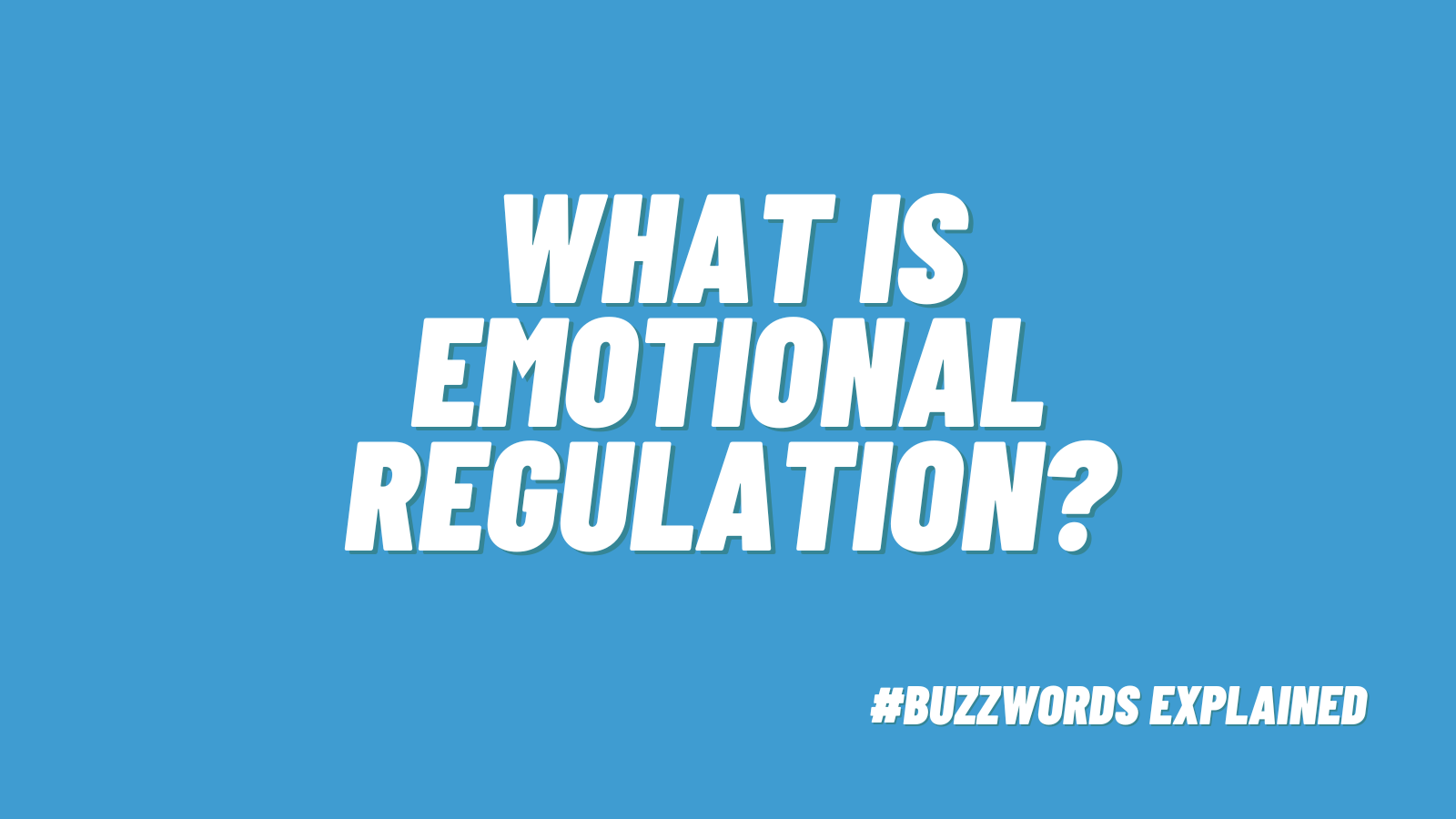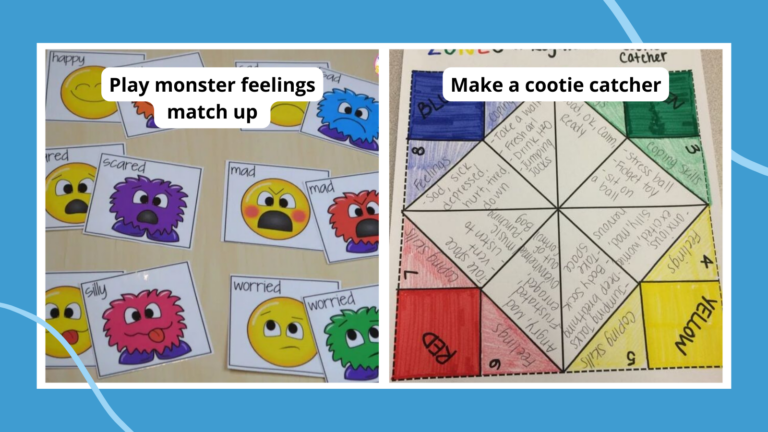It’s Tuesday at noon. Recess is over and it’s time for math. Your class returns and you give them the direction to take out their notebooks and work with their neighbor on a math problem. Everyone gets to work except for Jason. Jason is in the back of the room going through the crayon bucket. He ignores your request to sit down and instead continues to dig noisily through the bin. You give the class a 5-minute warning to complete their work. You ask Jason to put the crayons away and again he ignores you. It’s starting to get attention from the rest of your class. Time is tight and you need to move on. So you let Jason be and ignore his behavior. You’ll catch him up on the math tomorrow—when you’re also catching Julie up on the lesson she missed when she was upset after lunch on Monday. You think to yourself, “What’s going on here?” as you turn your attention to the 32 pairs of eyes waiting for you.
What IS going on here? All of these emotions are taking up a lot of academic time. Why are we seeing so much emotional dysregulation in classroom? There’s often so many BIG, unmanaged emotions that show that our students really aren’t ready to focus on learning.
It turns out that emotional regulation is the most important set of skills we assume students just “have.” But we can’t make this assumption as these skills aren’t innate—they need to be taught.
So, what is emotional regulation and how can we teach it?
What is emotional regulation?
Emotional regulation is the ability to manage your emotions by monitoring, evaluating, and modifying your emotional reactions (aka your behavior) in ways that are constructive and adaptive.
This particular definition underscores the reality we face. We all have emotions, but the most important skill is how we learn to manage them. While managing emotions is not a skill that comes naturally to all of us, we can all learn it.
Emotional regulation can look like the ability to:
- Identify what you’re feeling
- Respond to feelings without overreacting
- Manage changes in the environment
- Control impulses
- Calm down when getting upset
- Handle emotions in a healthy way
Here’s a helpful video that explains big emotions to kids:
How do we regulate emotions?
Psychologists break emotional regulation into three broad categories: suppression, reappraisal, and acceptance. When you suppress emotions, you push them down, refusing to acknowledge or act on them. This can be helpful in the short term, but it doesn’t actually help you deal with the emotion. It’s all still there under the surface, waiting to bubble up again.
Reappraisal is about reframing the situation in your mind, allowing you to deal with it calmly and rationally. We can teach kids reappraisal skills in a variety of ways, such as using mindfulness techniques. We can also urge them to simply accept their emotions, acknowledging them as valid but not letting them control their actions.
As adults, we know these skills don’t come easily, but that’s all the more reason to focus on teaching them. “For kids, dysregulation makes life challenging, friendships difficult, and most significantly, it can make learning impossible,” warns Lori Jackson, a school psychologist who co-founded The Connections Model. “To curb that, we need to teach emotional regulation so kids can realize that they’re in control of their feelings and subsequent actions.”
Why is it important to teach emotional regulation?
Kids will have a much harder time learning until they can manage their emotions. Developing emotional regulation is as important as developing academic skills. In fact, children who can regulate their emotions are more likely to do well in school and get along with peers. This makes sense since, at the core, emotion drives behavior.
Good emotional regulation can help kids:
- Express themselves in ways that don’t involve losing their temper
- Pay attention and listen to learn
- Control their impulses
- Maintain focus on a task
- Take turns
- Socialize appropriately
- Reflect on choices and consequences
- Bounce back from setbacks
- Stop themselves from getting overwhelmed
- Manage being upset
- Feel calm and in control
Is emotional regulation SEL?
Emotional regulation falls under the umbrella of SEL (social-emotional skills). SEL skills include self-management, self-awareness, social awareness, and responsible decision-making.
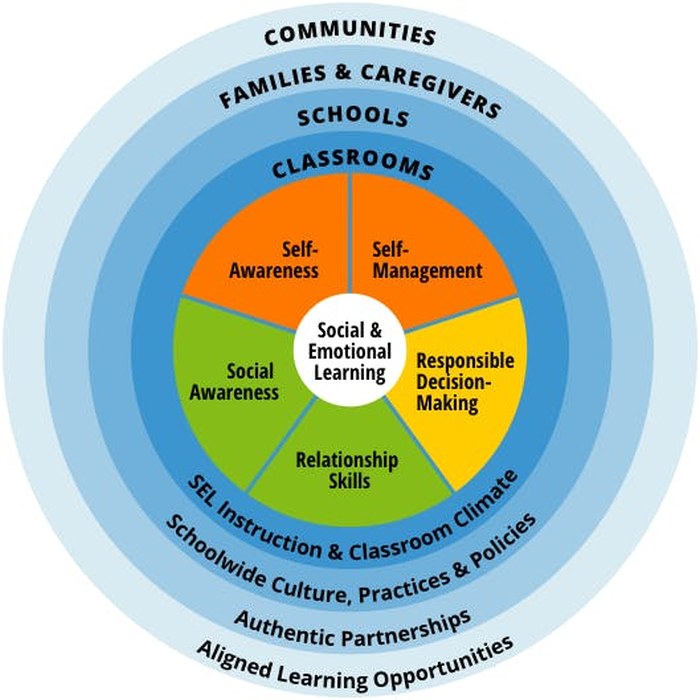
We like to think of the skills that build emotional regulation as the foundation of SEL. Without the ability to regulate our emotions, we have a harder time regulating ourselves. And since emotions drive our behavior, we have a hard time responding appropriately to social situations and building relationships. So, the first step in regulating emotions is learning how.
Read more: What Is SEL?
Ideas for practicing emotional regulation in the classroom
Now knowing how important emotional regulation is, what are some ways to teach students this essential skill in the classroom?
1. Learn to identify emotions

Talk to students about different emotions and how those emotions can cause us to act. For instance, many kids will realize that they cry when they’re sad. But not everyone cries under those circumstances—some people get very quiet or even show anger instead. Start with simple emotions, and ask students to name situations where they might feel those emotions. Then, ask them how they behave when they feel a certain way.
Teaching this skill is at the forefront of the KidConnect Ready2Learn Curriculum. In teaching students emotional regulation, the first step of their curriculum across all grade levels includes learning to name specific emotions. Lori Jackson, a school psychologist, and Steve Peck, a special education teacher, developed the KidConnect Ready2Learn curriculum, which explicitly teaches children to manage their emotions. “We noticed that so many of our students were having issues learning, socializing, and succeeding because they lacked the skills needed to manage their emotions. So we developed a process that was both easy to teach and easy to learn and teaches the underlying principles but then allows kids to apply and practice those skills in the classroom and everywhere they go.”
2. Think about emotions in advance
Begin the school day by asking your students a question to find out how they are feeling or what might be bothering them. Writing the question on the whiteboard and having students write their answers on sticky notes is an easy way to implement it into your routine. “Ask your students about their homework or what they ate for breakfast. Ask if anyone fought with their brother or sister,” suggests Jackson. “The idea is to discuss any event that likely elicited a feeling and have everyone share. This sets the tone for the day, giving you the heads up on who might have a tough day and why.”
3. Use books to teach emotions
Stories can be great examples of handling emotions in a responsible way. They can serve as safe and inviting ways to start the conversation about the range of feelings we have and how to handle each. By reading and talking through how the characters’ emotions connect with their actions, students can start to talk through how emotions drive behaviors. Check out these children’s books for teaching SEL skills.
4. Make sure emotions are a focus in your classroom

Build your students’ emotion vocabulary by giving them direct access to those words and feelings. Lauren Ross, LCSW and school social worker for the Cherry Creek School District in Denver, Colorado, suggests creating a word wall filled with feelings words. Then, when kids are demonstrating negative behaviors, ask them to look at the wall and choose the words to describe how they’re feeling. This helps them connect those actions and emotions and consider what coping strategies they can try.
5. Integrate emotions into your academics and activities

One of the easiest ways to integrate the teaching of emotions is to make it a part of your daily schedule and routine. When you go through your daily schedule with your students, ask them to tell you the emotions they think they will feel. Does math make them anxious? Bored? Tired? Will recess make them nervous because they don’t always have someone to hang out with? Spending a few minutes anticipating what emotions might emerge allows you to help your students think about how they will manage those emotions. What strategies can they come up with to manage their emotions? Write them down so that you can remind them to use those strategies in the moment. This process isn’t magic, but over time this activity helps to build the emotional regulation process, allowing them to become better able to focus on their learning.
6. Act it out
Role-play how to handle different situations, especially those that your students struggle with. Write each scenario on a note card. For example: You get invited to a birthday party. You slip and fall while walking home from school. You open a birthday present you don’t like. Then, have students talk them through or act them out. How would they feel? What would they do? How does their feeling connect with their behavior?
7. Teach mindfulness strategies
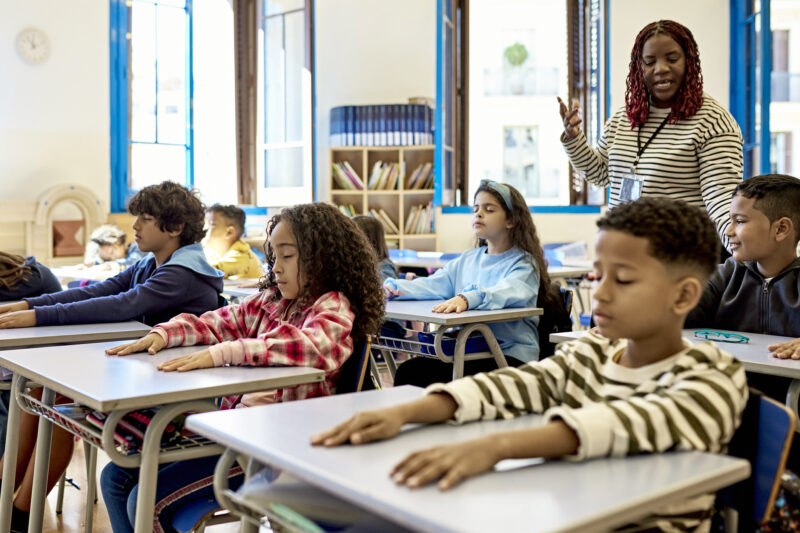
According to Mindful.org, mindfulness is “the basic human ability to be fully present, aware of where we are and what we’re doing, and not overly reactive or overwhelmed by what’s going on around us.” There are dozens of mindfulness strategies, from meditation and deep breathing to journaling and drawing. As kids learn a strategy that’s useful to them, they can add it to their own emotional regulation toolkit. Explore 50+ mindfulness activities here.
8. Create a calm-down corner
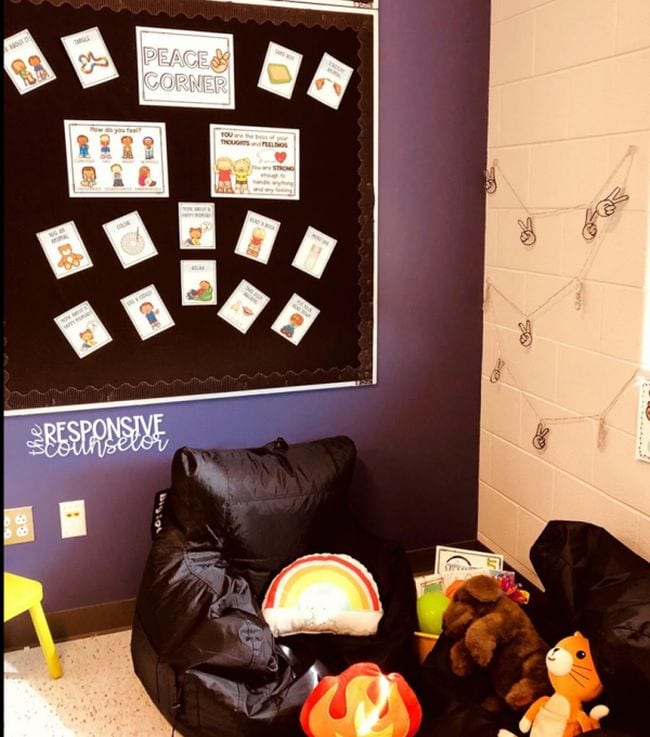
Set aside a dedicated space in your classroom where kids can go to practice their emotional regulation skills. A calm-down corner, sometimes known as a peace corner, gives kids a place to recenter and refocus so they can join the learning again. You can stock it with helpful tools like emotion charts, fidget toys, social-emotional books, and more. Learn how to create your own calm-down corner here.
9. Focus on progress, not perfection
Emotional regulation isn’t about being perfect—it’s not about responding to every change and frustration without emotion. No adult is even expected to do that. It is about learning and practicing all the ways kids can respond to emotions, and adjusting as they grow and learn over time.
Why do some kids struggle with emotional regulation?
We all struggle with emotional regulation at some point (anyone who has sat in a meeting that went on 10 minutes too long can relate), but how much we struggle with emotional regulation depends both on temperament and learned behavior. A child’s temperament is innate. Even as babies, some children have more trouble self-soothing. Other kids seem to be able to manage any emotion with no problem. How adults respond to kids’ big reactions impacts the behaviors that children use to manage their emotions, for good and bad. For example, if a child has a temper tantrum because it’s time to leave the park, and the adult gives in and lets them have 10 more minutes to play, the chance that the child will scream and kick next time they are given a limit and feel unhappy are pretty high. Whereas, if the adult sets the limit and coaches the child through their unhappiness, the child learns how to manage disappointment without throwing a tantrum.
Additionally, many kids with disabilities, like ADHD and autism, have deficits in emotional regulation. So, in order for them to learn, they need to manage their emotions first.
But the good news is that everyone can learn. With practice and the right methods, everyone can learn to be their own emotional managers. Not only will that help your students become better learners and happier people, but you’ll have a more engaged classroom overall!
